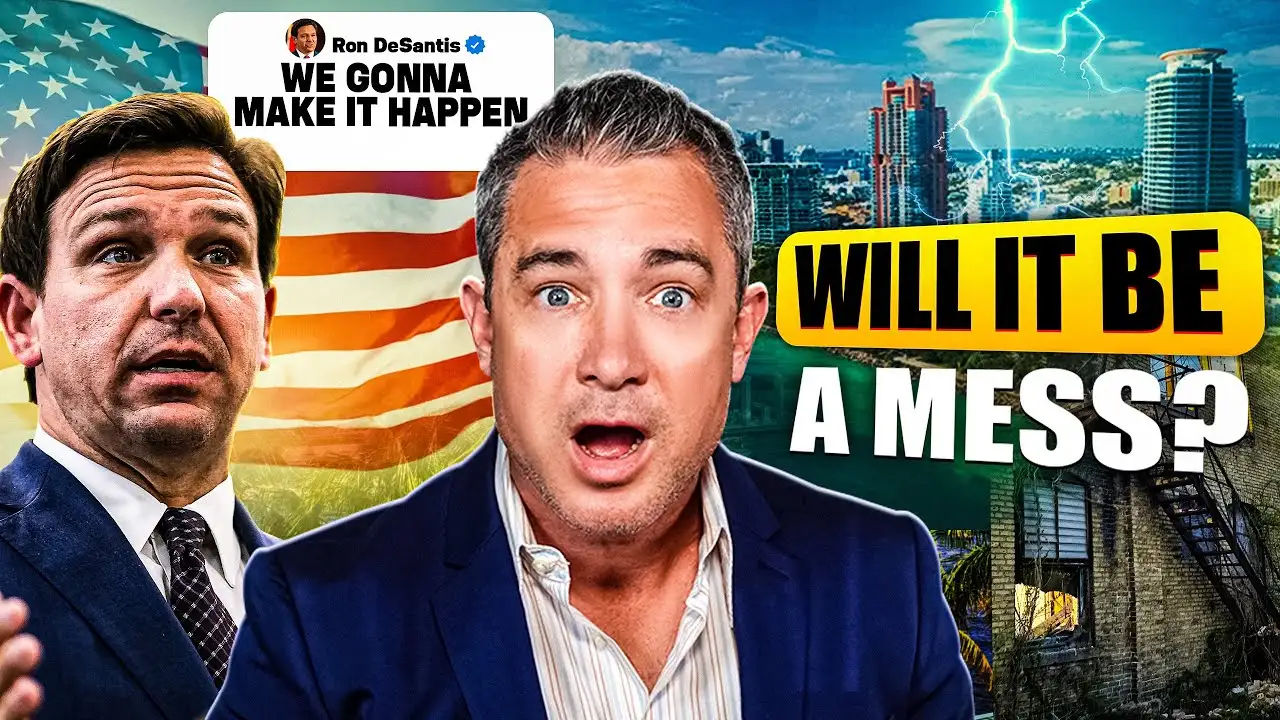
Sarasota, Florida, USA - “End the property tax” has escaped the fringe and landed on real campaign stages. From statehouses to think-tank whiteboards, activists are packaging abolition as a way to rescue retirees from escalating bills and stop tax foreclosures. In 2025 the idea isn’t just talk: Ohio Republicans drafted a constitutional amendment to phase out local property taxes statewide; Florida’s House Speaker demanded a study of swapping property tax for higher sales taxes; and Texas leaders keep floating elimination frameworks after a record 2023 cut.

Three tailwinds: reassessment spikes after the pandemic housing run-up; insurance and mortgage costs compounding homeowner pain; and a post-COVID office slump that is already shrinking commercial values—and with them, future tax bases—especially in big metros. State fiscal analysts and Moody’s have warned that commercial-property stress is a real risk to local revenues.
Property taxes predate the republic. Colonies levied them widely; by the 19th century they were a mainstay of state and local finance. Today they remain the single largest local tax in the U.S., accounting for roughly three-quarters of local tax revenue and about a third of total local general revenue (the slice varies by state). In practical terms: property tax is how we pay teachers, pave streets, keep libraries open, and secure most general-obligation bonds.
Nationally, local revenues—powered largely by property taxes—supply a large share of K-12 funding. That reliance is precisely why “abolish” collides with the realities of school finance formulas and bond covenants.
We’ve been here before. California’s Prop 13 (1978) didn’t abolish the tax; it capped assessments and rates, pushing more school funding to the state and permanently reshaping local autonomy. Colorado’s Gallagher Amendment (1982) held down residential assessments for decades and was repealed in 2020 after years of fiscal contortions. These are cautionary tales: even soft caps trigger big second-order effects. Abolition would be far more disruptive.
Local governments don’t just “have” property taxes—they pledge them. Most general-obligation (GO) bonds are secured by an ad valorem tax on property. Eliminate the tax and you must defease, refinance, or constitutionally guarantee new revenue streams acceptable to bondholders and ratings agencies. Expect higher borrowing costs if the pledge weakens.
So what fills the hole? Common abolition blueprints combine:
And there’s timing. With office towers being reassessed down, some city leaders argue abolition now would lock in a smaller commercial contribution and shift more of the long-run load onto consumption—precisely as e-commerce keeps leaking sales out of local bases.
“Kill the property tax” polls well because the bill arrives even if your income doesn’t. But every successful modern reform of property taxation has either (a) softened the edges (caps, exemptions, circuit breakers), (b) moved the load to the state, or (c) changed what we tax (land vs. buildings)—not erased the revenue altogether. Abolition asks voters to accept a much bigger gamble: replacing the backbone of local finance with a mix of state aid and volatile taxes, while preserving school quality and local credit. That’s a very high bar—and it’s why the last outright repeal effort (North Dakota, 2012) failed 76–24.
If any state truly goes for abolition, the plan that survives courtrooms and rating agency models will likely include:
Abolishing the property tax is politically potent and fiscally perilous. If the goal is to protect homeowners and fix fairness, states have tools right now—circuit breakers, homestead expansions, land-value shifts—that deliver relief without sawing off the revenue limb local government stands on. The math doesn’t care about slogans. It will have to add up in bond documents, school budgets, and real neighborhoods the day after the celebration.